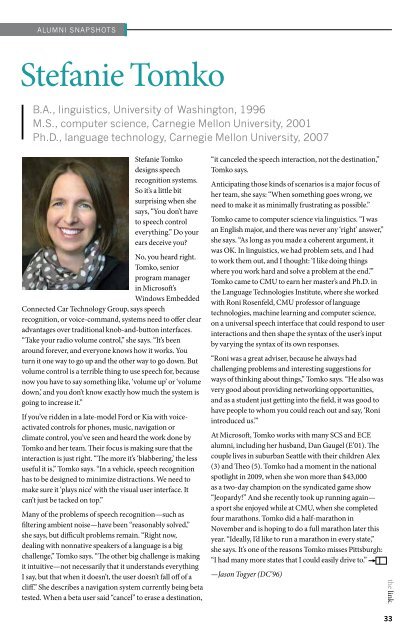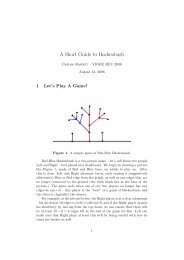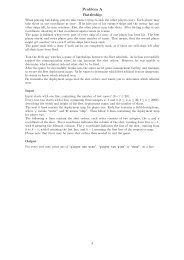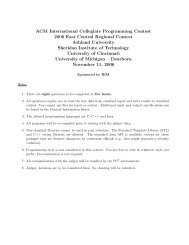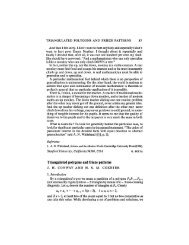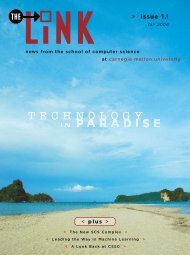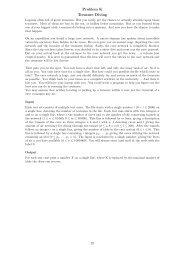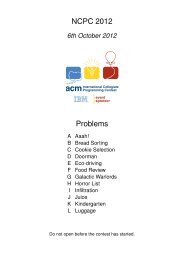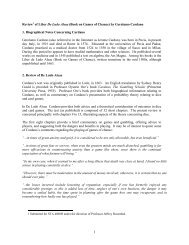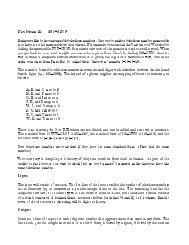Download now (1.3MB, PDF reader required) - Link home page
Download now (1.3MB, PDF reader required) - Link home page
Download now (1.3MB, PDF reader required) - Link home page
Create successful ePaper yourself
Turn your PDF publications into a flip-book with our unique Google optimized e-Paper software.
ALUMNI SNAPSHOTS<br />
Stefanie Tomko<br />
B.A., linguistics, University of Washington, 1996<br />
M.S., computer science, Carnegie Mellon University, 2001<br />
Ph.D., language technology, Carnegie Mellon University, 2007<br />
Stefanie Tomko<br />
designs speech<br />
recognition systems.<br />
So it’s a little bit<br />
surprising when she<br />
says, “You don’t have<br />
to speech control<br />
everything.” Do your<br />
ears deceive you<br />
No, you heard right.<br />
Tomko, senior<br />
program manager<br />
in Microsoft’s<br />
Windows Embedded<br />
Connected Car Technology Group, says speech<br />
recognition, or voice-command, systems need to offer clear<br />
advantages over traditional knob-and-button interfaces.<br />
“Take your radio volume control,” she says. “It’s been<br />
around forever, and everyone k<strong>now</strong>s how it works. You<br />
turn it one way to go up and the other way to go down. But<br />
volume control is a terrible thing to use speech for, because<br />
<strong>now</strong> you have to say something like, ‘volume up’ or ‘volume<br />
down,’ and you don’t k<strong>now</strong> exactly how much the system is<br />
going to increase it.”<br />
If you’ve ridden in a late-model Ford or Kia with voiceactivated<br />
controls for phones, music, navigation or<br />
climate control, you’ve seen and heard the work done by<br />
Tomko and her team. Their focus is making sure that the<br />
interaction is just right. “The more it’s ‘blabbering,’ the less<br />
useful it is,” Tomko says. “In a vehicle, speech recognition<br />
has to be designed to minimize distractions. We need to<br />
make sure it ‘plays nice’ with the visual user interface. It<br />
can’t just be tacked on top.”<br />
Many of the problems of speech recognition—such as<br />
filtering ambient noise—have been “reasonably solved,”<br />
she says, but difficult problems remain. “Right <strong>now</strong>,<br />
dealing with nonnative speakers of a language is a big<br />
challenge,” Tomko says. “The other big challenge is making<br />
it intuitive—not necessarily that it understands everything<br />
I say, but that when it doesn’t, the user doesn’t fall off of a<br />
cliff.” She describes a navigation system currently being beta<br />
tested. When a beta user said “cancel” to erase a destination,<br />
“it canceled the speech interaction, not the destination,”<br />
Tomko says.<br />
Anticipating those kinds of scenarios is a major focus of<br />
her team, she says: “When something goes wrong, we<br />
need to make it as minimally frustrating as possible.”<br />
Tomko came to computer science via linguistics. “I was<br />
an English major, and there was never any ‘right’ answer,”<br />
she says. “As long as you made a coherent argument, it<br />
was OK. In linguistics, we had problem sets, and I had<br />
to work them out, and I thought: ‘I like doing things<br />
where you work hard and solve a problem at the end.’”<br />
Tomko came to CMU to earn her master’s and Ph.D. in<br />
the Language Technologies Institute, where she worked<br />
with Roni Rosenfeld, CMU professor of language<br />
technologies, machine learning and computer science,<br />
on a universal speech interface that could respond to user<br />
interactions and then shape the syntax of the user’s input<br />
by varying the syntax of its own responses.<br />
“Roni was a great adviser, because he always had<br />
challenging problems and interesting suggestions for<br />
ways of thinking about things,” Tomko says. “He also was<br />
very good about providing networking opportunities,<br />
and as a student just getting into the field, it was good to<br />
have people to whom you could reach out and say, ‘Roni<br />
introduced us.’”<br />
At Microsoft, Tomko works with many SCS and ECE<br />
alumni, including her husband, Dan Gaugel (E’01). The<br />
couple lives in suburban Seattle with their children Alex<br />
(3) and Theo (5). Tomko had a moment in the national<br />
spotlight in 2009, when she won more than $43,000<br />
as a two-day champion on the syndicated game show<br />
“Jeopardy!” And she recently took up running again—<br />
a sport she enjoyed while at CMU, when she completed<br />
four marathons. Tomko did a half-marathon in<br />
November and is hoping to do a full marathon later this<br />
year. “Ideally, I’d like to run a marathon in every state,”<br />
she says. It’s one of the reasons Tomko misses Pittsburgh:<br />
“I had many more states that I could easily drive to.”<br />
—Jason Togyer (DC’96)<br />
the link.<br />
33


